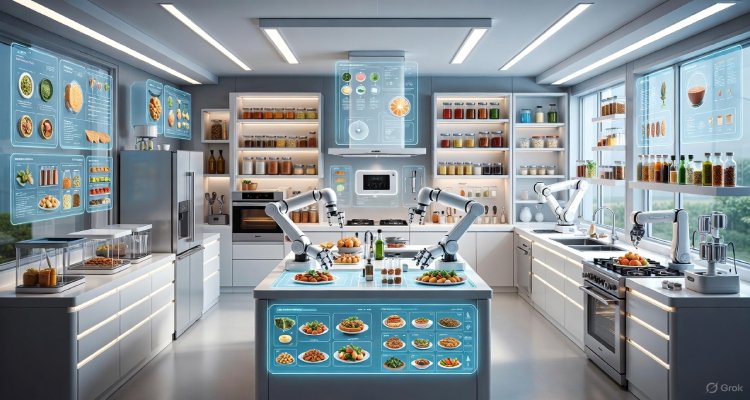Ghost Kitchens: Are They Killing Culinary Identity?
Are ghost kitchens eroding culinary culture? Explore how delivery-only kitchens redefine dining while raising questions about authenticity and identity.
Introduction
A late-night craving for dumplings today might be satisfied by an order from a “restaurant” that doesn’t physically exist. Ghost kitchens—delivery-only culinary hubs hidden in industrial zones or tucked behind another eatery’s storefront—are rewriting the rules of the restaurant industry. But as they rapidly expand, critics wonder: are they nourishing convenience at the cost of cultural authenticity and culinary identity?
Context & Background
Ghost kitchens, sometimes called cloud kitchens, emerged as a response to two major forces: surging food delivery demand and high operating costs for restaurants. Platforms like Uber Eats, Zomato, Swiggy, and DoorDash fueled the trend by making digital food discovery seamless. For aspiring chefs and established brands alike, ghost kitchens cut rent costs, reduce staffing needs, and allow experimentation with multiple menus under one roof.
The COVID-19 pandemic accelerated their rise. As physical dining spaces shuttered worldwide, many operators pivoted to delivery-only formats. Post-pandemic, ghost kitchens remain entrenched, serving everything from gourmet burgers to complex regional cuisines—often under brand names customers may not realize exist solely online.
Main Developments
According to industry reports, the global ghost kitchen market size is projected to exceed $117 billion by 2030. Several major players are investing heavily: Uber has partnerships with kitchen operators in the U.S., while India’s Rebel Foods claims to run over 4,000 virtual restaurants across the globe. Large chains like Wendy’s and Starbucks have also dipped into the model to penetrate markets where setting up physical stores is difficult.
Yet with growth comes concern. Food critics argue that while ghost kitchens are efficient, they blur the lines of transparency. A consumer ordering “Mama’s Kitchen Curry House” may have little idea it’s cooked in the same facility that preps tacos and pancakes under different brand names. For cultures where cuisine is an extension of identity, heritage, and storytelling, this standardization risks eroding deeply personal culinary traditions.
Expert Insight & Public Reaction
Chef Anita Rao, a restaurateur in Bengaluru, summarizes the dilemma: “Food is not just about feeding people—it carries memory, family history, and cultural context. When ghost kitchens hide behind faceless brand names, they dilute that connection.”
On the consumer side, reactions are mixed. For college students and busy professionals, ghost kitchens are a godsend: affordable, fast, and diverse. Social media commentary often praises the creativity of “virtual menus” that offer exotic flavors previously unavailable in smaller towns. But food purists lament what they call the “commodification of the plate,” where dishes are designed for Instagram visibility rather than cultural accuracy or sustainability.
Industry analysts provide a more balanced view. Researcher James Klein notes that ghost kitchens need not replace traditional restaurants. Instead, “They may serve as laboratories for ideas, testing recipes before chefs commit to brick-and-mortar establishments. The challenge is maintaining authenticity and transparency while scaling convenience.”
Impact & Implications
The implications of ghost kitchens stretch across stakeholders:
-
Chefs and Restaurants: Independent chefs may lose visibility if overshadowed by algorithm-friendly brands. Conversely, smaller players can enter the market without heavy capital investment.
-
Consumers: While variety and affordability rise, trust and culinary education may erode if branding masks origins.
-
Culture: Iconic dishes rooted in history risk becoming distorted replicas packaged for mass consumption.
-
Economics: Urban real estate may shift as delivery hubs outcompete dine-in spaces, impacting employment in traditional hospitality.
The future likely rests on adaptability. Some operators already highlight sustainability, traceability, and chef stories on their digital menus to reassure diners. Governments, too, may push for stricter brand transparency to protect consumers.
Conclusion
Ghost kitchens are here to stay, reshaping the way we eat and experience food. They thrive on modern convenience but pose critical questions: can cultural essence survive when kitchens become invisible? In a world driven by speed, the challenge will be finding balance—ensuring that food remains not just nourishment, but also a vessel of identity, heritage, and community.
Disclaimer : This article is for informational purposes only. It reflects research and expert perspectives on ghost kitchens and does not provide business, financial, or culinary advice.











